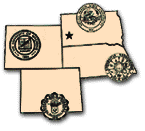Animal Science, Department of

Range Beef Cow Symposium
Date of this Version
December 1997
Document Type
Article
Abstract
Carcass evaluation for the Angus breed was conceived by Dr. Richard Willham and co-researchers at Iowa State University in 1972 as part of the original sire evaluation program. This very structured program consisted of random mating schemes throughout several commercial herds using the same set of bulls. These sires were later referred to as the original set of reference sires for the Angus breed and served as foundation benchmarks for future evaluation.
This structured sire evaluation program is still in place. While it has been refined and altered by Dr. Doyle Wilson to fit today's needs, the basic principles are still in tact. (Guidelines for structured sire evaluation have appeared in the Angus Journal on a periodic basis and are available from the association upon request.)
When we consider the use of carcass EPD, we must remember that the improvement of livestock is somewhat like mapping out a trip. First, we must know where we are. Secondly, we must determine where we are going, and thirdly, we must plot a route.
Before we are able to make improvements in carcass traits we must establish some knowledge of the genetic merit of the herd for these traits. The time tested means of retrieving carcass data, of course, is through retained ownership of steers from conception to slaughter with cooperating feedlots and packers in order to obtain carcass data on each individual animal slaughtered.
This is relatively easy for large operations; however, it does provide problems for smaller producers with insufficient progeny numbers to make the system work. In this regard, some groups have pooled resources and livestock in order to efficiently retain ownership, feed steers, and recover carcass data.


Comments
Published for Proceedings, The Range Beef Cow Symposium XV December 9, 10 and 11, 1997, Rapid City, South Dakota.